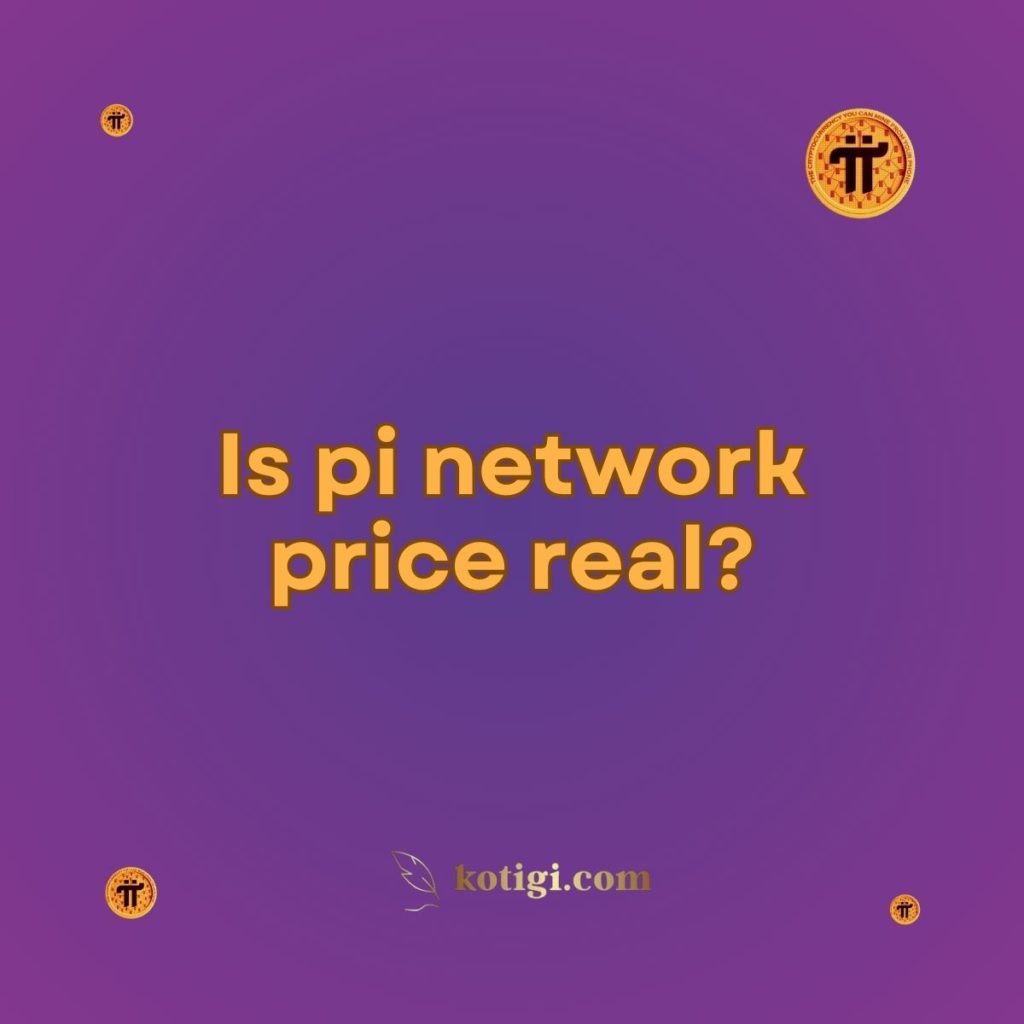
Is pi network price real?
The Pi Network price seen on unofficial platforms is not real, as Pi is still in its enclosed mainnet phase and not yet listed on public cryptocurrency exchanges. Any Pi prices displayed are speculative and not backed by official trading data. Pi’s true market price will only be established once it launches on exchanges during the open mainnet phase.
Introduction
With the rise of Pi Network and its growing user base, many are wondering if the prices being circulated online for Pi coins are legitimate. There have been reports of Pi prices on unofficial exchanges and forums, but given the current phase of Pi Network, it’s essential to understand what these prices mean and when Pi will have a real market value.
Current State of Pi Network
Enclosed Mainnet
Pi Network is currently in its enclosed mainnet phase, which means Pi coins are not tradable on public exchanges. The enclosed mainnet is a controlled environment that allows Pi to strengthen its infrastructure, perform security audits, and complete the KYC (Know Your Customer) process for millions of users.
During this phase, any prices attributed to Pi coins are speculative and not based on actual market trading. As a result, any price you see for Pi on social media, forums, or unofficial platforms should be viewed with caution.
What Does “Enclosed Mainnet” Mean for Pi’s Price?
In the enclosed mainnet, Pi can only be used within the Pi ecosystem. Users can exchange Pi for goods and services with other verified users, but external transactions are prohibited. This means that no official market price for Pi exists yet because it hasn’t been listed or traded on any public cryptocurrency exchange.
Why Are Pi Prices Being Shown?
Speculation and Misleading Information
The prices that some users see online or on unofficial platforms are often based on speculation. These speculative prices are not backed by any real trading activity or official exchange listing. In some cases, users may attempt to assign a value to Pi based on what they believe its future potential might be, but this is purely theoretical.
Since Pi Network is still in its developmental phase, the project has not released any official valuation for Pi coins. Any prices seen outside the Pi Network app should be approached with skepticism.
Why Are Some Platforms Claiming Pi Has a Price?
Some unofficial platforms or exchanges may display prices for Pi as a way to attract attention or traffic. However, since Pi coins cannot yet be withdrawn or traded on these platforms, these prices have no real value. Pi Network has explicitly warned users to avoid engaging with such platforms, as they do not reflect the true status of the network.
When Will Pi Have a Real Price?
Open Mainnet Phase
Pi will have an official market price once it transitions to the open mainnet phase. The open mainnet will allow Pi to be traded on public exchanges, where its value will be determined by supply and demand in the market. This is the stage when Pi coins can be exchanged for other cryptocurrencies or fiat currencies, and their true value will be established.
Until the open mainnet is launched, no official price can be assigned to Pi coins. Users should continue mining Pi and wait for the network’s official announcements regarding the open mainnet launch.
Determining Pi’s Market Value
Once Pi is listed on exchanges, its market value will be determined by several factors:
- Supply and Demand: The number of users willing to buy and sell Pi will affect its price.
- Utility: How useful Pi becomes in real-world applications, such as in commerce or decentralized apps (dApps), will influence its value.
- Adoption: The more users and businesses that adopt Pi, the higher its potential value.
When Will the Open Mainnet Launch?
There is no set date for the open mainnet launch, as the Pi Core Team is focused on ensuring the platform is secure and scalable before allowing external trading. The team has emphasized the importance of completing KYC for users and fine-tuning the blockchain before opening it to the public.
Risks of Buying or Selling Pi Now
Unofficial Platforms
As Pi is not officially tradable, any platforms or individuals offering to buy or sell Pi coins outside of the Pi Network app should be avoided. These platforms often mislead users with speculative prices, and engaging with them could result in losing your Pi or exposing yourself to fraud.
Risk of Scams
Because Pi Network has gained significant attention, scammers are using this interest to target users. Be wary of any offers to buy or sell Pi, as these are not legitimate transactions. Pi cannot be traded outside the Pi ecosystem until the open mainnet is launched, and any third-party offers are likely to be scams.
How to Verify Pi’s Future Price?
Official Exchange Listings
Once Pi is listed on public exchanges, users will be able to verify its price through reputable cryptocurrency platforms like:
- CoinMarketCap
- CoinGecko
- Binance
- Kraken
These exchanges will provide real-time price data for Pi once it becomes tradeable, allowing users to track its market performance.
Keeping Up With Official Updates
The best way to stay informed about Pi’s future price and trading status is to follow official Pi Network updates. The Pi Core Team regularly communicates with its user base through the Pi app, social media channels, and its official website. Avoid relying on unofficial sources or rumors, as these can often provide misleading information.
Future Price Speculation
What Could Pi Be Worth?
There is much speculation about what Pi could be worth once it becomes tradable. Some users believe that Pi’s large user base and energy-efficient mining process could lead to a high valuation, while others are more cautious, pointing out that the project is still in its early stages and has not yet proven itself in the open market.
Factors that could affect Pi’s future price include:
- Market Competition: Pi will need to compete with established cryptocurrencies like Bitcoin, Ethereum, and newer projects.
- Adoption and Use Cases: If Pi is widely adopted for real-world transactions, it could increase in value.
- Supply of Pi Coins: The total supply of Pi and its inflation rate will also impact its price once trading begins.
Comparison to Other Cryptocurrencies
Pi is often compared to Bitcoin due to its mobile mining process and decentralized structure, but it is important to note that Pi is still far from reaching the same level of adoption and market maturity as Bitcoin. Bitcoin’s price is influenced by years of trading, development, and real-world use cases, while Pi’s price remains speculative until it launches on exchanges.
Conclusion
At present, the prices attributed to Pi Network on unofficial platforms are not real. Pi is still in its enclosed mainnet phase, and no official market price has been set. Users should be cautious of any speculative prices and avoid engaging in unofficial trading. Pi’s true value will only be established once the open mainnet is launched and Pi is listed on public cryptocurrency exchanges.
Until then, users can continue mining Pi, complete their KYC verification, and wait for official updates on when Pi will become tradable.
Key Takeaways:
- The current Pi Network price is not real and is based on speculation.
- Pi cannot be traded on public exchanges during the enclosed mainnet phase.
- The true market price of Pi will be determined when the open mainnet launches.
- Be cautious of unofficial platforms offering speculative prices for Pi.
- Pi’s market value will depend on factors like supply, demand, and adoption when it becomes tradable.





